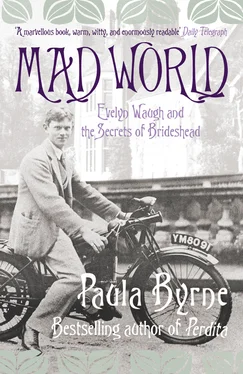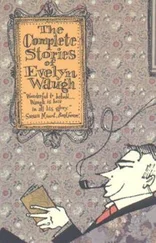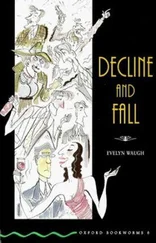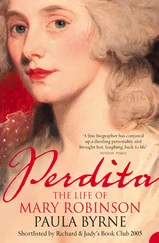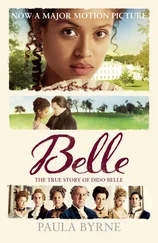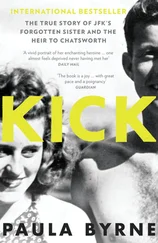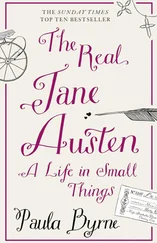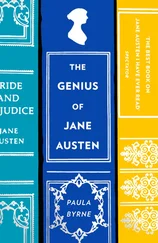CHAPTER 4 The Scarlet Woman
After Evelyn’s humiliating departure from Oxford, he returned home to Underhill. For a few happy weeks, he hung out with Alastair. They wandered around greater London like Parisian flâneurs . But then Alastair departed for Kenya, leaving Evelyn with nothing to look forward to save ‘heart-breaking dreariness’. He anticipated ‘bills, over-fastidious tastes and a completely hopeless future’.
Evelyn was bored. He resented his father, missed his friends and most of all missed Oxford. He made an abortive attempt to kick-start a career in art, enrolling in a course at Heatherley’s Art School in Chelsea. His first assignment was to draw a thin man sitting cross-legged ‘with no clothes but a bag about his genitalia’. The place was full of girls in gaudy overalls, who, Evelyn thought, drew badly and distracted the young men who were hoping to make commercial careers for themselves in advertising or ‘by illustrating Punch’ . The model for a ‘quick sketch’ class was ‘a young girl with a very graceful body and a face rather like Hugh Lygon’s when very drunk’.
He also began, but soon abandoned, a novel called ‘The Temple at Thatch’. It was about an undergraduate who inherited a property of which nothing was left except an eighteenth-century classical folly where he set up house and practised black magic. Later, he destroyed the manuscript, so we will never know whether the (presumably aristocratic) protagonist was in any way inspired by Hugh Lygon or whether a line can be traced from the classical temple at Thatch to the Catholic chapel at Brideshead.
Every morning he walked to Hampstead tube station, hiding pennies along the way, which he then collected on the way home to alleviate boredom. This new life was a shock after the intensity of Oxford. He complained to friends about the dull routine of dinner and early nights after desultory conversation with ‘Chapman and Hall’ (his nickname for his father). His social life only improved when his brother Alec took him in hand, inviting him to parties and nightclubs. He became a parasite upon his more successful sibling. In his fragmentary second volume of autobiography, he acknowledged his debt to Alec ‘as a host who introduced me to the best restaurants of London, on whom I sponged, bringing my friends to his flat and, when short of money, sleeping on his floor until the tubes opened when I would at dawn sway home to Hampstead in crumpled evening dress among the navvies setting out for their day’s work’. In fact, home was not Hampstead but Golders Green – Evelyn would walk to a pillar box in Hampstead so that the postmark would not be Golders Green. Alec once remarked that ‘there is no stronger deterrent to one’s enjoyment of an evening than the knowledge that one has to at the end of it to get to Golders Green’.
The most popular of the nightclubs that they frequented was the Cave of Harmony in Charlotte Street, run by Harold Scott and his partner, Elsa Lanchester. She was a fragile, red-haired beauty who was trying to become an actress. Later, she would become famous for playing the title role in The Bride of Frankenstein . The Cave of Harmony was patronised by journalists and actors, who drank late and tried out their short plays and cabaret acts. Alec went there every Saturday night, taking his brother with him. They befriended Elsa, and Evelyn persuaded her to take part in an amateur film that he was making with his Oxford friend Terence Greenidge.
Greenidge had bought a 16-millimetre camera and become a keen amateur cinematographer, casting his fellow Hypocrites in outrageous roles. The first we hear from Evelyn himself of his involvement with this activity is in a diary entry of 5 July 1924, when he and Christopher Hollis go to see one of Terence’s films at a dive in Great Ormond Street. Lured by the expectation of seeing Hugh Lygon there, Evelyn was disappointed to find instead ‘a sorry congregation of shits’.
Greenidge’s short films had been shot under the aegis of the Hypocrites and the Oxford Labour Club in the summer term of 1924. They had such enticing titles as 666, The Mummers , Bar Sinister and The City of the Plain . The latter was subtitled A Story of the Oxford Underworld . A ‘burlesque of the American moralising melodrama’, it was a celebration of the immorality of the Hypocrites.
Evelyn had acted in at least two of these films, alongside such friends as Hugh Lygon and Chris Hollis. Greenidge was especially impressed with Hugh’s performances, especially the lead role he played in The City of the Plain . All the reels are, alas, lost: they were last glimpsed in the hands of the Official Receiver in the late 1960s, when Greenidge was a bankrupted dying actor. Little is known of their content, but the biblical titles are suggestive: 666 is the number of the Beast, while ‘the City of the Plain’ is evidently an allusion to Sodom in the Old Testament. Sin, and sexual ‘beastliness’ in particular, must have been the (suitably Hypocritical) subject matter. There may also have been some dabbling in black magic, another Hypocrite preoccupation. In one of the films Waugh played the part of a lecherous black clergyman, wearing what Greenidge remembered as ‘horrible scarlet make-up, which came out black in those early days’.
Homosexuality certainly seems to have been on Waugh’s mind at this time. A few days after the evening in Great Ormond Street when they watched one of Greenidge’s films, he recorded an anecdote of Hollis’s in his diary:
Chris turned up in the morning and told me a good story. Mr Justice Phillimore was trying a sodomy case and brooded greatly whether his judgment had been right. He went to consult [Lord] Birkenhead. ‘Excuse me, my Lord, but could you tell me – What do you think one ought to give a man who allows himself to be buggered?’ ‘Oh, 30 s[hillings] or £2 – anything you happen to have on you.’
The Hypocrites’ flirtation with early cinema continued over the summer of 1924. Evelyn, whose most significant early short story (‘The Balance’) was written in the style of a film script, wrote the screenplay for a new Terence Greenidge production. Entitled The Scarlet Woman: An Ecclesiastical Melodrama , it was rediscovered in the 1960s and can now be seen on DVD. The outlandish plot turned on an attempt by ‘Sligger’ Urquhart, Dean of Balliol (the man who had returned Richard Pares to the academic straight and narrow), to convert England to Roman Catholicism by exercising his dastardly Papist influence on the Prince of Wales. The title plays on the fact that ‘scarlet woman’ was a colloquial expression for both a prostitute and the Church of Rome. A favourable review in the Oxford student newspaper, Isis , had particular praise for Waugh’s method of introducing the audience to the leading characters:
Each figure in this drama of intrigue is disclosed indulging in his favourite sport. So we have a scene in the Papal gardens with the Papal whisky and its owner, the private chamber of the King and the royal gin, the Count of Montefiasco with the Romish cognac, and the eminent Catholic layman [Sligger] with his academic vodka. This convivial introduction had the effect of making us feel that we had known the characters for years.
Filming took place in July, shooting locations being Oxford, Hampstead Heath and Arthur Waugh’s back garden. Elsa Lanchester played the heroine, an evangelical cabaret singer called Beatrice who saves the day by drawing the Prince from Urquhart’s clutches. Evelyn, kitted out in a blond wig, played Sligger, alluding freely to the dean’s homosexuality by fondling the Prince of Wales (played by Greenidge’s brother John, known as ‘the Bastard’). John Sutro was Cardinal Montefiasco and Alec Waugh the cardinal’s mother. Elmley played the Lord Chamberlain, whose real life counterpart would without doubt have banned the script had there been an attempt to release it commercially. Old Arthur Waugh enjoyed the shenanigans immensely.
Читать дальше
